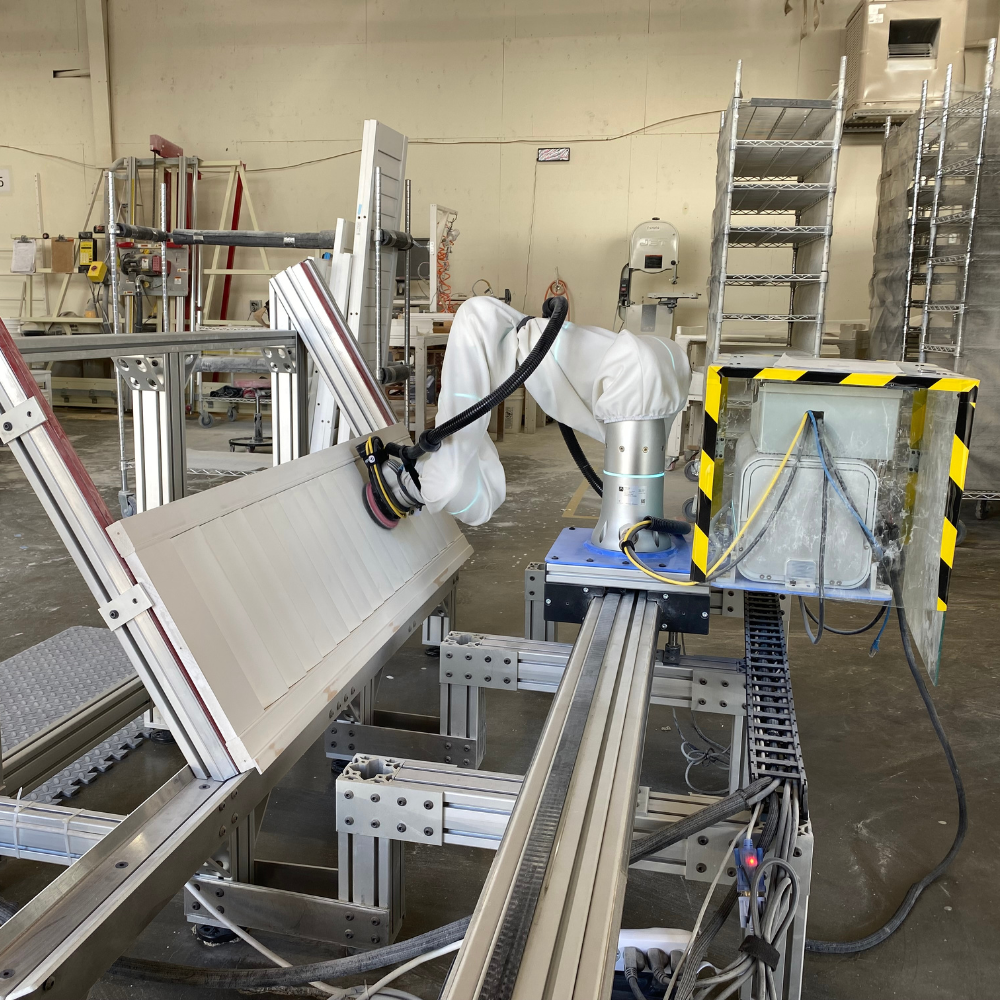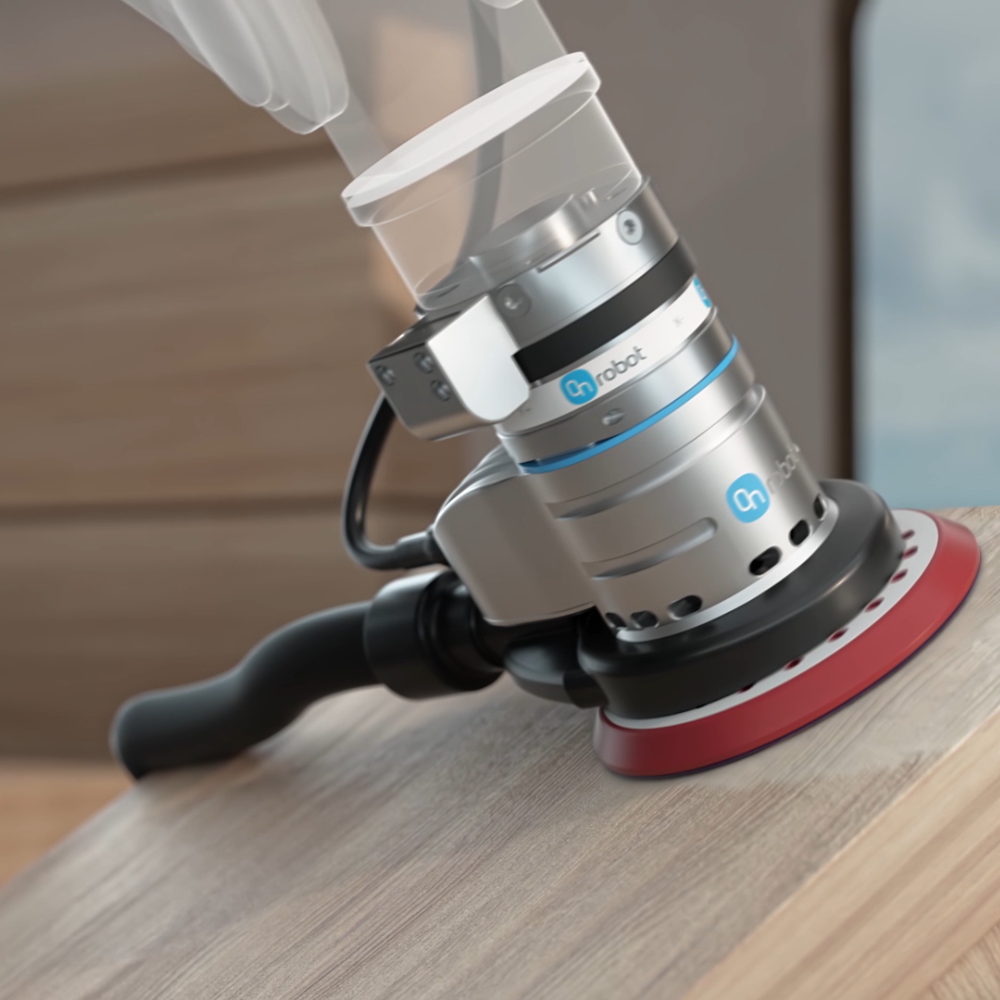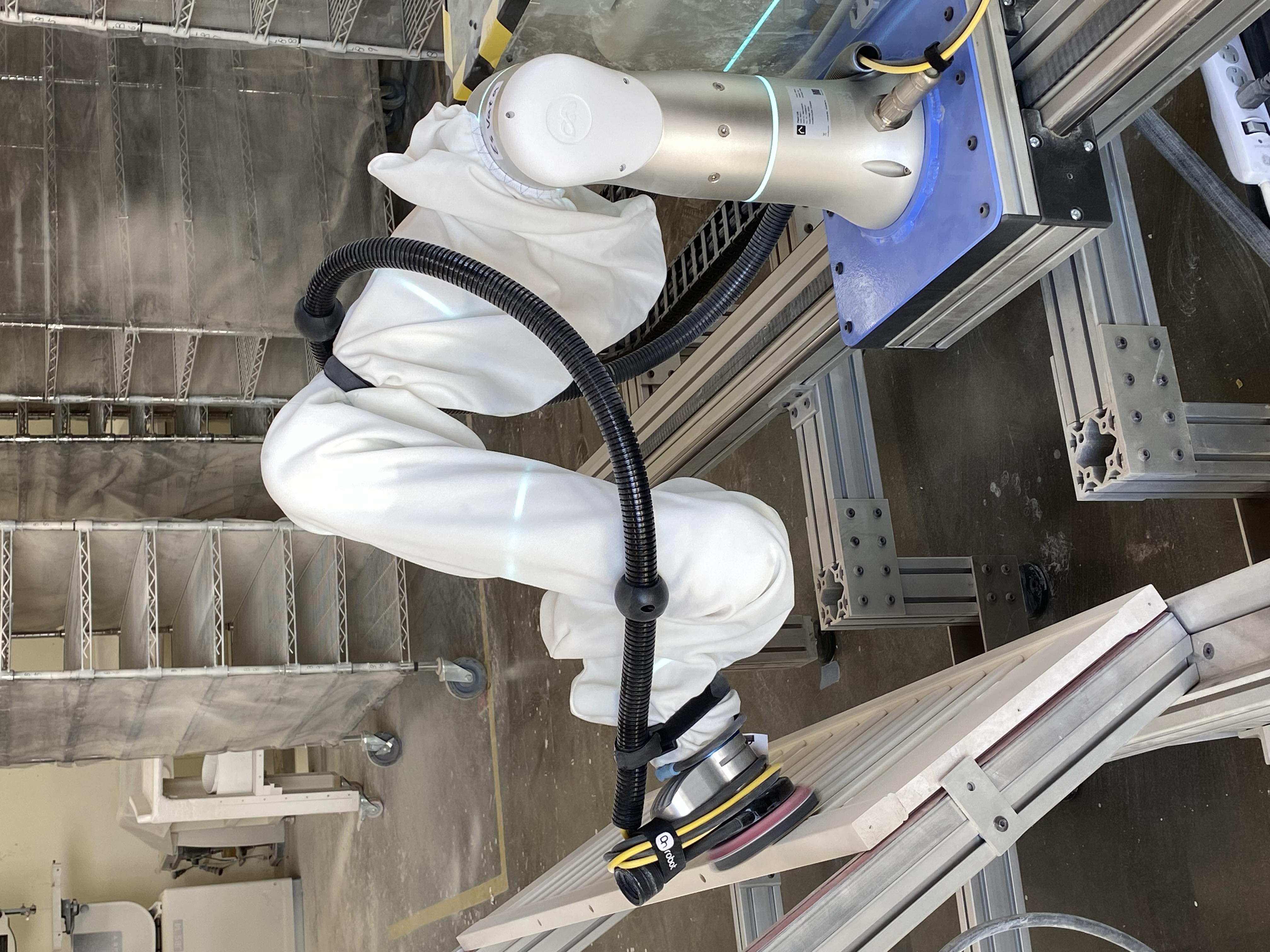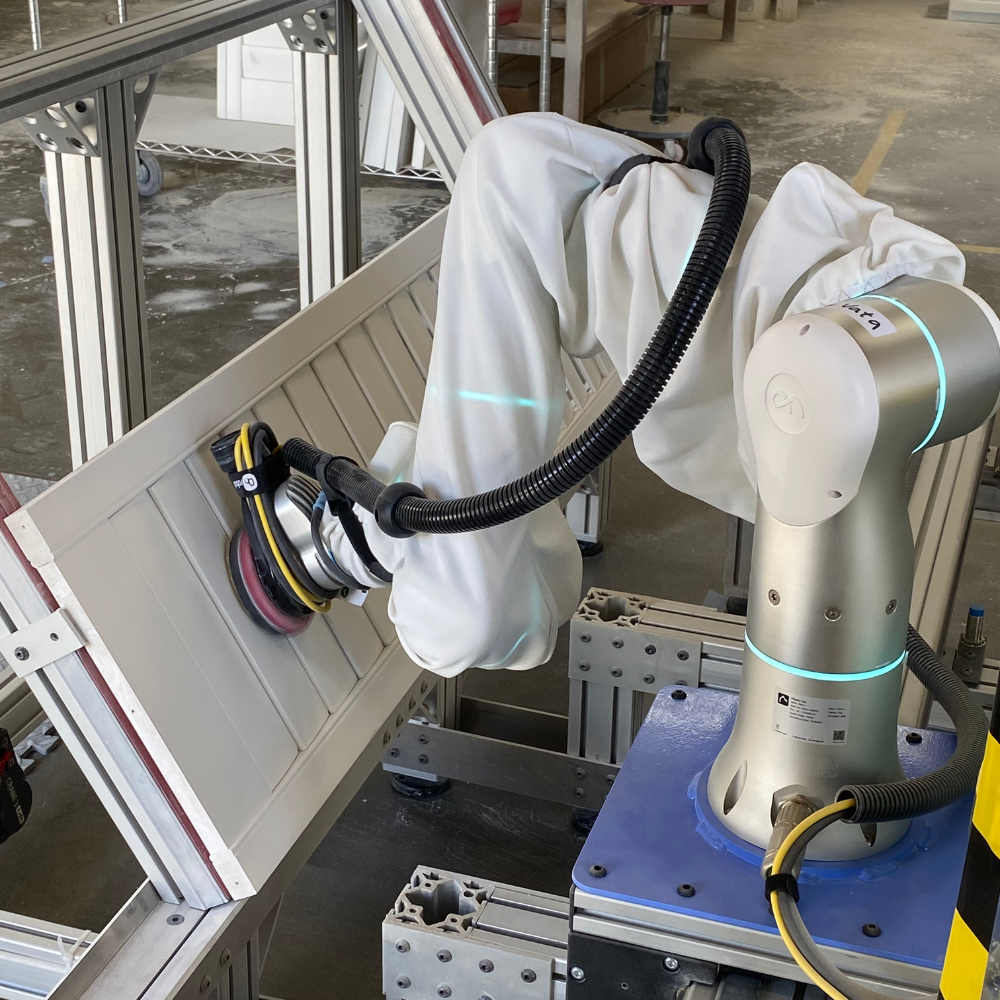The choice of the OnRobot Sander came down to its reliability, consistency, and the ability to make modifications. The added feature of controlling the RPM is very precise, at plus or minus ten RPMs. “Adding that onto the 3/16th orbital method for fine sanding, that plays a crucial factor in making sure products are evenly sanded,” says Hsieh.
Bomhoff says, “We chose the OnRobot Sander because it's a company and a product that we trust. We know we're going to have a high-quality sander. These sanders are very low vibration, which is ideal for a force-control robot because we want to maintain good contact with the surface that we're sanding. These sanders are also very lightweight, which is ideal for our Rizon robot.”
Quick changeovers and no need for external air supply
The OnRobot Sander is connected to the robot using the OnRobot Quick Changer. “That's a big selling point for us because it's an ISO standard flange, so we don't need additional modifications or brackets,” says Bomhoff. “It very easily attaches to our robot and we can get the operation started very quickly.”
An additional advantage of the OnRobot electric Sander is that it doesn't need a pneumatic hose. That simplifies setup by eliminating the air supply and additional cabling and wire tubing, as well as reducing maintenance costs. Studies show that manufacturers can save more than $1,600 annually on a single shift with 240 days of operation with the electric Sander vs. pneumatic alternatives. The brushless electric motor can run for 30,000 hours. “Based on use on a day shift, it'll last ten-plus years, easily. That's pretty unheard-of for sanders,” says Hsieh.
Bomhoff mentions additional features that he looks forward to implementing in the future: “OnRobot has an automatic grit replacement for their Sander, which is a really critical step in making the entire automation cell fully automated.”
Reduced material costs with no over-sanding
By automating the sanding process, errors such as over-sanding or missing areas are no longer an issue, so defect rates have plummeted. Automation has also helped reduce material costs. With employees hand sanding, the sandpaper might wear out faster with not a quantifiable way of figuring out when the sandpaper is due for replacement, “With the OnRobot Sander and consistent RPMs, we can better calculate based on square footage what we have sanded. That allows us to buy better sandpaper that lasts longer and provides more efficiency and quality,” says Hsieh.
About EsVata Shutters
EsVata Shutters was founded in 2019 in Pasadena, California by Paul Hsieh, who wanted to create a company that embraces new ideas and technology. EsVata's meticulous production process has been designed and refined to produce blinds, shades, and shutters that are ideal for every customer, sourcing sustainable basswood from trusted lumber mills. Learn more: www.esvata.com





